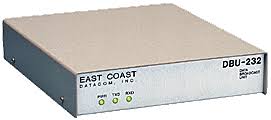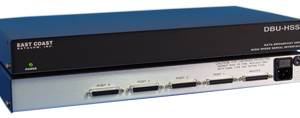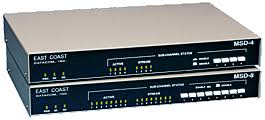Products
Stateful Traffic Generator®, STG-10G
The Stateful Traffic Generator® model STG-10G is based on the well known traffic generation engine D-ITG. The STG-10G is composed of a Graphical User Interface (GUI) that wraps the D-ITG engine, INTEL® DPDK Fast Packet Technology and other test tools.
Description
The Stateful Traffic Generator® model STG-10G is based on the well known traffic generation engine D-ITG. The STG-10G is composed of a Graphical User Interface (GUI) that wraps the D-ITG engine, INTEL DPDK Fast Packet Technology and other test tools.
Using D-ITG, the STG-10G is capable of producing IPv4 and IPv6 traffic by accurately replicating the workload of current Internet or typical user applications. The platform supports 8-Ports 10/100/1000 and 4-Ports of 10GbE traffic generation managed via the easy to use GUI. This allows users to perform load tests on hardware prior to deployment and to simulate wired or wireless network traffic behavior.
The D-ITG generation engine provides many interesting and unique features. With D-ITG the STG-10G is also a network measurement tool able to measure the most common performance metrics such as throughput, delay, jitter and packet loss at the packet level. The STG-10G can generate traffic following stochastic models for packet size (PS) and inter departure time (IDT) that mimic application-level protocol behavior. By specifying the distributions of IDT and PS random variables, it is possible to choose different renewal processes for packet generation: by using characterization and modeling results from literature, STG-10G is able to replicate statistical properties of traffic of different well-known applications such as Telnet, VoIP – G.711, G.723, G.729, Voice Activity Detection, Compressed RTP – DNS, network games.
At the transport layer, the STG-10G currently supports UDP, TCP, ICMP, DCCP, SCTP and soon to be released support for IGMP. Additionally an FTP-like passive mode is also supported to conduct experiments in the presence of NATs, and it is possible to set the TOS (DS) and TTL IP header fields. The STG-10G also supports replay of Pcap files with an easy to use Pcap player that allows cyclic repetition and speed scaling.
INTEL® DPDK Fast Packet Technology was integrated into the STG-10G that allows wire line rates even for tiny 64byte packets. The combination of D-ITG and INTEL® DPDK technology allows the STG-10G to generate traffic at comparable rates to FPGA based proprietary systems at half the price. The STG-10G Stateful Traffic Generator® is able to generate multiple unidirectional flows, many senders toward many receivers.
The STG-10G supports two modes of packet transmission. One being the Standard Mode for realistic traffic simulation allowing adjustable data rates. The Turbo Mode allows line rate transmission utilizing INTEL DPDK drivers with Pcap files containing any type of traffic.




